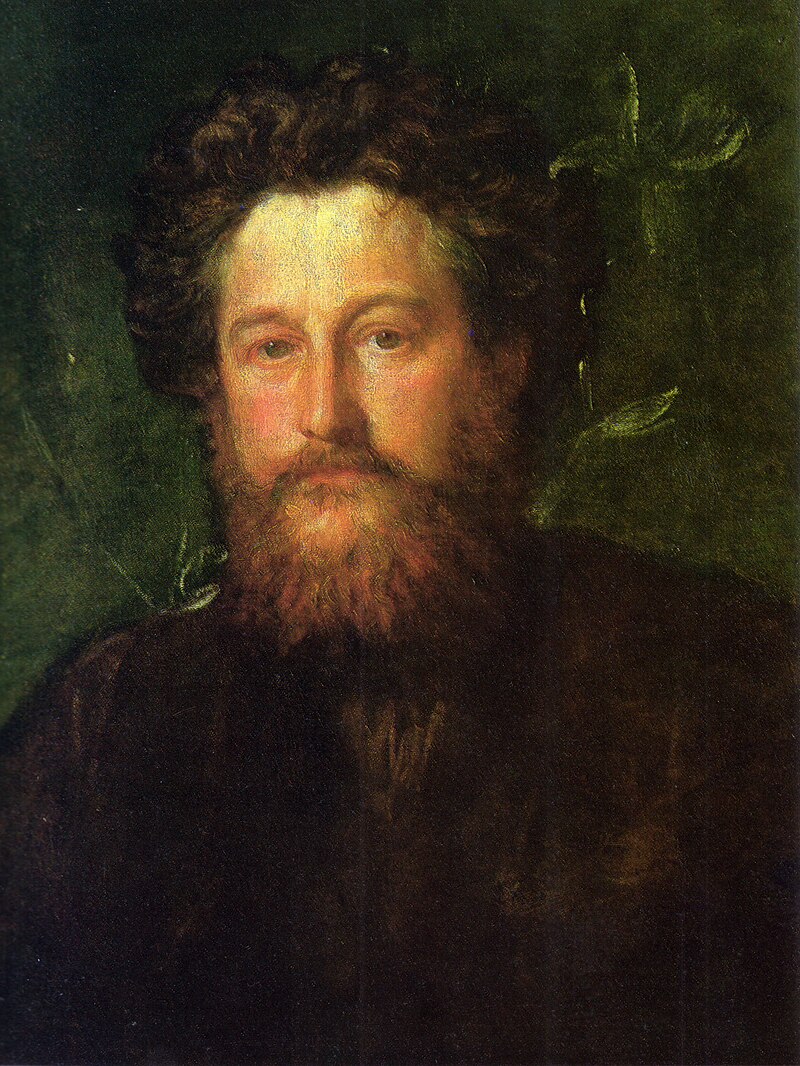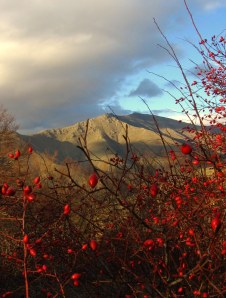So it seems I have now been writing this blog for exactly ten years. If I had considered this when I started and realised it was going to have more than one or two actual readers, I might have come up with a better name for it... I recall being too eager to get down to it to think beyond the idea that it would be about 'some landscapes'. That
first post in November 2005 was about two works by Richard Long and Hamish Fulton combining sound, text and art - three ways of addressing landscape through culture that I have continued to write about ever since. All the subsequent posts are still available on my clickbait-free sidebar, or they can be accessed through the
index (itself now nearly 20,000 words long) or through the Google maps I recently added. However, rather than look back on what I have covered over the years, I thought it might be good here to celebrate other people's blogs that I have particularly enjoyed, with a few autumnal images and quotes thrown in.
'The sun passes lower in the sky, bringing the quickening rush that starts the long winter months. Tresses of drying peppers spread like flames across sheds, turning the stone walls into scenes of tropical design. The elegant stems of onions that have spoked all summer above the swelling bulbs are plaited, woven together like hands in a dance, and hung out of the way of snow. Felled trees are hauled by donkey from the forests, wearing a glaze of lichens and ice. They’re split by axe throughout the day, the thud of blade against wood marking the hours, and stacked to face what is left of the sun.'
This description is from '
Gathering In', an autumn 2011 post on Julian Hoffman's
Notes from Near and Far. His blog has formed the basis of a book,
The Small Heart of Things, on the landscape of the Prespa Lakes in northern Greece. In 2015 it seems more likely that a Twitter feed will lead to a book deal - Penguin recently won a bidding war over the Herdwick Shepherd. According to
the Guardian, The Shepherd’s Life'may well do for sheep
what Helen Macdonald did for hawks'. Before
H is for Hawk, Helen (as Pluvialis) wrote
Fretmarks, a personal blog which flew wherever it wanted - there were obviously a lot of hawk photos but also thoughtful reflections on poetry and nature writing, plus on one occasion a little appreciation of the Jon Spencer Blues Explosion (that's a JSBX T-shirt being worn by Plinius in the photo accompanying this blog). Some writers have obviously been told to write blogs by their publishers but there are those who clearly do them for the love of sharing their experiences in the landscape - Melissa Harrison's
Tales of the City,
for example. I often turn to Caspar Henderson's
A New Map of Wonders for inspiration -
today he has quoted Barry Lopez: 'the first lesson in learning how to see more deeply into a landscape was to be continuously attentive...
Julian Hoffman, photograph for 'Gathering In', 2011
Both myself and Mrs Plinius are great admirers of the writings of Ken Worpole. The blog he started with Jason Orton,
The New English Landscape, contains short essays on some of the themes I have covered on this site. British writing, music and film have all been covered in recent years on
Landscapism, which I hope Eddie manages to keep going while he pursues his academic studies. Similar ground has been covered by the collective blog
Caught by the River, for which many of those I am talking about here have written short pieces. Collaborative sites can be as transitory as personal ones, but this one, with its publications, social events and festival appearances, looks like it will become a long-lived and well-loved British institution. Another excellent blog with many authors is hosted by The Wordsworth Trust. It's focus is on
Romanticism broadly, not just Wordsworth - I have a post on Robert Southey's 'The Cataract of Lodore' coming up on it soon.
Some of the earlier literary blogs posted diary entries of great authors - you can for example read what
Henry David Thoreau had to say about cranberries on this day in 1853. The
John Clare Weblog started over a year before mine and reached its 1000th post sometime ago. Each entry contains a poem or text, often linked to the changing seasons. From
November 2005 here is the first stanza of one of Clare's autumn poems which seems particularly apt in a week of such blustery weather.
I love the fitful gust that shakes
The casement all the day,
And from the glossy elm tree takes
The faded leaves away,
Twirling them by the window pane
With thousand others down the lane.
The web is full of poetry sites (the Poetry Foundation's
Harriet blog has a long list of links) but one of the most visually appealing is '
Beyond the Pale', a blog by Tom Clark. This is the American Tom Clark, not to be confused with Thomas A. Clark who also has a more infrequent
blog, highlighting his art works and new publications. 'Beyond the Pale' covers a wide range of material but it does sometimes feature poems with landscape imagery; a recent
post for example centred on a translation of Hsieh T'iao's 'Viewing the Three Lakes', from which these are the opening lines
Red clouds mirrored where the waters meet.
From the red terrace -- birds returning,
the encircling plains, mosaic of river isles.
Inklings of spring's luxuriance
as autumn's last yellows fade.
Last yellows, from my window today
These autumn images keep reminding me of the transitory nature of blogs which may aspire to the form of trees but are more often like leaves, sustained only for a short time. I am sure many psychogeography and walking blogs have been started over the last ten years; among those still being maintained are the
Psychogeographic Review,
Under a Grey Sky (Berlin),
Urban Adventure in Rotterdam,
East of Elveden (Norfolk) and
Particulations (theory). My two favourites (both with exemplary accompanying Twitter feeds) are
Lines of Landscape and
The Fife Psychogeographical Collective. The FPC now have a book based on the blog,
From Hill to Sea, which I am sure is excellent. The most recent dispatch from Fife had an Autumnal theme and included these lines from Rilke's
Letters on Cézanne'At no other time (than autumn) does the earth let itself be inhaled in one smell, the ripe earth; in a smell that is in no way inferior to the smell of the sea, bitter where it borders on taste, and more honeysweet where you feel it touching the first sounds. Containing depth within itself, darkness, something of the grave almost.'
Sadly, over all these years, I have never found any other blogs devoted to the
history of landscape art. I had hoped that the Internet's 'long tail' might have given rise to blogs devoted to the art of Cézanne or
Balke or Altdorfer, to the Nanjing School or
Aeropittura or early seventeenth century copper plate landscapes... perhaps they do exist and I've failed to come across them. For garden history I always used to enjoy
Gardenhistorygirl - silent since 2014 - but the Garden Visit site's
blog continues and it sometimes discusses interesting historical questions (e.g.
on whether Zen gardens really were 'Zen'). I like the way its latest post begins: 'hard to know what I would write if the
Sunday Express asked me to do a few hundred words on garden design but I can put some helpful advice in one sentence: 'don’t take advice from Alan Titchmarsh''.
No doubt someone has already written an academic study of blogging's role in art practice. Chris Drury has used
microcosm and macrocosm to document three of his projects, but it has been dormant since 2012. He is one of the artists whose progress I follow through
Peter Foolen's blog, a reliable source of intelligence on upcoming exhibitions by people like herman de vries, Roger Ackling, Ian Hamilton Finlay, Alec Finlay and the artists wrote about ten years ago today, Hamish Fulton and Richard Long. Alec Finlay's own
blogspot site is probably no longer the optimal means of keeping up with his activities but, like Chris Drury, he has used blogger to chart the progress of certain projects. Five years ago I
wrote about
The Road North, in which he and Ken Cockburn mapped Basho's famous journey onto the geography of Scotland.
Station 47 was their temple of
Zenshoji, Stonypath
, the garden created by Alec's parents. In this post Alec quoted an autumn poem by Basho (the translation is by Cid Corman).
all that night
the autumn winds being heard
beyond the mountains
Alec Finlay, Autumn (fallen), 2010
Music and sound art blogs have come and gone - the useful
Field Reporter site for example seems to have become inactive a year ago. It looked for a while as if Alex Ross would stop writing
The Rest is Noise but he is still at it (I quoted him in a
recent post about Mahler). His latest post is about a 'mobile opera' performed out in the landscape,
Hopscotch. Some of the composers I have featured in my end-of-year
landscape music surveys have kept blogs. The
Land Observations site documents the work of James Brooks which I first mentioned
here in 2012. Jez riley French has a
blog for his field recordings but also another one,
treasure hiding, that is more of an online notebook featuring art and photography as well as music. Richard Skelton has one
blog under his own name
one for his
Landings project. The Corbel Stone Press which Richard runs with Autumn Richardson has its own elegant Wordpress
blog - newest posts concern the latest edition of their journal
Reliquiae. (I will shortly be editing the first
Reliquiae Digital Supplement in collaboration with flowerville, whose own
blog engages with an intriguing range of writers).
There are more I should mention... hard to classify like
The Art of Memory (the link I've embedded here is to posts labelled 'sea'), or at the outer limits what I cover on this site:
Friends of the Pleistocene,
Ecology without Nature. Design, with its constant flow of striking images and new ideas has been an ideal subject for blogs, some of which have grown into more ambitious undertakings (two of my neighbours run an excellent site called Dezeen which often features nature-related design and
landscape architecture). I have kept links here to a few blogs that investigated landscape futures even though they are no longer being updated:
Deconcrete,
Landscape and Urbanism and the much-missed
Pruned. But the best of these speculative blogs, indeed the finest blog of any kind I have encountered, Geoff Manaugh's BLDGBLOG, passed its
tenth anniversary last year. I'll end by repeating here what Geoff wrote then, thanking you 'for reading, commenting, critiquing, and following along, whoever and wherever you are.'






























_-_Google_Art_Project.jpg/800px-Pieter_Bruegel_the_Elder_-_Hunters_in_the_Snow_(Winter)_-_Google_Art_Project.jpg)








